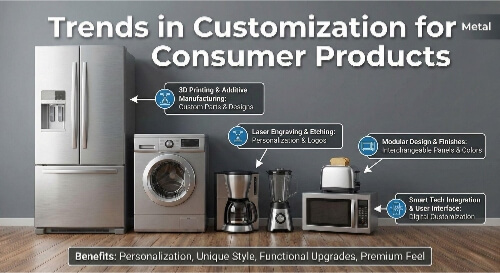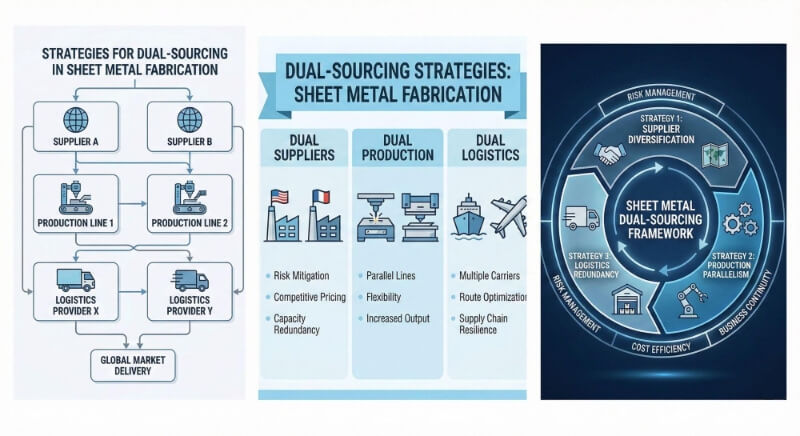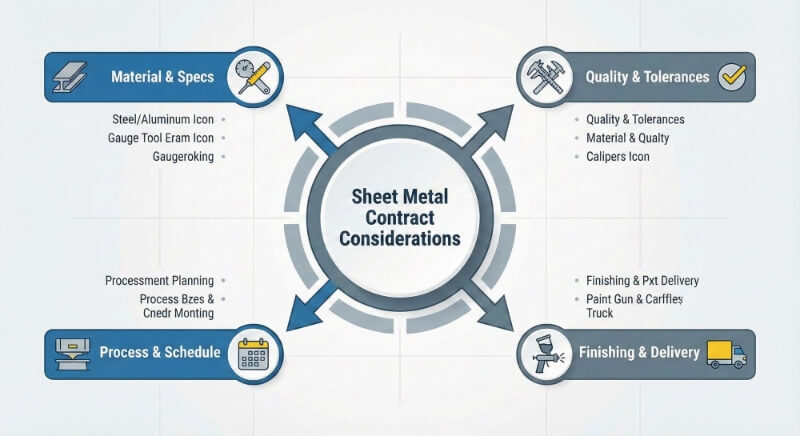I pezzi in metallo sono disponibili in molte forme e dimensioni, ma può essere difficile crearli con velocità e precisione. La fresatura verticale è uno strumento in grado di risolvere questi problemi comuni. Quando si sa come usarla nel modo giusto, si possono realizzare pezzi complessi più velocemente e con meno errori. Questa guida illustra ciò che è necessario sapere, fornendo le conoscenze necessarie per fare scelte migliori ed evitare perdite di tempo.
Molte officine utilizzano la fresatura verticale perché è veloce, flessibile e facile da imparare. Volete realizzare pezzi migliori e velocizzare il vostro flusso di lavoro? Esploriamo i punti chiave.
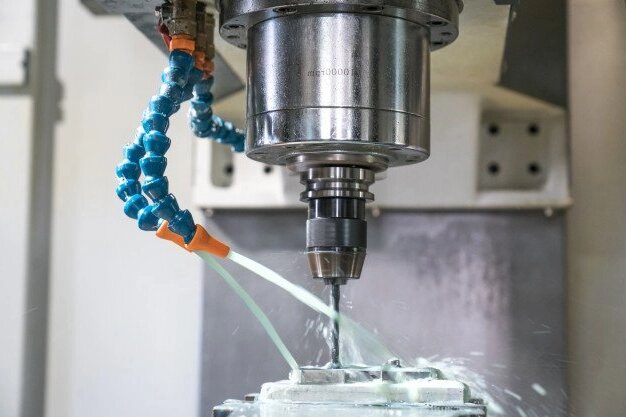
Che cos'è la fresatura verticale?
La fresatura verticale è un processo di taglio in cui il mandrino tiene l'utensile da taglio in verticale. L'utensile si muove verso l'alto e verso il basso per rimuovere il materiale. Il pezzo da lavorare rimane fisso sulla tavola della macchina, che può muoversi da un lato all'altro e dall'avanti all'indietro.
Questo metodo funziona bene per creare superfici piane, scanalature e fori. Viene spesso utilizzato per pezzi che richiedono tolleranze ristrette. La fresatura verticale è eccellente per i lavori di precisione perché l'utensile si muove direttamente nel materiale.
Caratteristiche principali di una fresatrice verticale
Una fresatrice verticale è composta da alcune parti fondamentali:
- Mandrino verticale: Trattiene e ruota l'utensile da taglio.
- Tavolo: Sostiene il pezzo e si muove nelle direzioni X e Y.
- Ginocchio: Solleva e abbassa il tavolo per controllare la profondità.
- Colonna: Fornisce il supporto per il mandrino e altre parti.
- Quill: Consente il controllo fine del movimento verticale.
Queste macchine sono solitamente più facili da installare rispetto alle frese orizzontali. Sono anche più compatte, il che le rende una scelta popolare per le officine più piccole.
Tipi di fresatrici verticali
Progetti diversi richiedono configurazioni diverse. Le fresatrici verticali sono disponibili in diversi tipi, ciascuno progettato per soddisfare esigenze specifiche in termini di dimensioni, potenza e automazione.
Fresatrici verticali a torretta
Le frese a torretta hanno una testa rotante che può essere spostata in più direzioni. Ciò consente all'operatore di posizionare l'utensile da taglio a diverse angolazioni senza spostare troppo il pezzo.
Queste macchine flessibili funzionano bene per i pezzi personalizzati o per i lavori a bassa tiratura. Sono molto apprezzate nelle sale utensili e nelle piccole officine dove sono necessari frequenti cambi di configurazione.
Fresatrici verticali a banco
La tavola si muove solo nelle direzioni X e Y in una fresa a banco. La testa si muove verso l'alto e verso il basso per tagliare.
Queste macchine sono più pesanti e più stabili delle frese a torretta. Sono più adatte ai pezzi più pesanti e alle produzioni più lunghe. Si trovano in officine che hanno bisogno di maggiore rigidità e resistenza per i tagli più grezzi.
Mulini verticali CNC
I programmi informatici controllano le frese verticali CNC. Offrono alta precisione, ripetibilità e automazione.
Queste macchine sono utilizzate per la prototipazione e la produzione completa. Possono eseguire pezzi complessi senza un costante intervento manuale. Le frese verticali CNC sono comuni nei settori che richiedono tolleranze strette, come quello aerospaziale, medico ed elettronico.
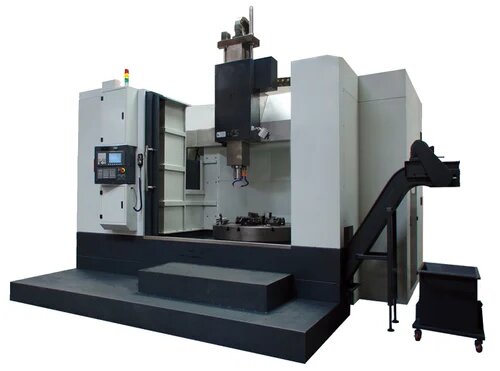
Principi di funzionamento della fresatura verticale
Conoscere il movimento e il taglio della macchina è fondamentale per ottenere buoni risultati dalla fresatura verticale. Queste idee di base guidano ogni taglio eseguito.
Movimenti degli assi e direzioni di lavorazione
Le frese verticali lavorano su tre assi principali: X, Y e Z.
- Asse X: Sposta il tavolo a destra e a sinistra.
- Asse Y: Sposta la tabella in avanti e indietro.
- Asse Z: Sposta l'utensile da taglio verso l'alto e verso il basso.
La fresa si muove verticalmente nel materiale, mentre il tavolo si sposta orizzontalmente per guidare il taglio. Questa configurazione consente alla macchina di tagliare superfici piane, scanalature e forme complesse.
Innesto dell'utensile e meccanismo di taglio
L'utensile da taglio ruota ad alta velocità. Quando entra in contatto con il materiale, taglia piccoli trucioli. La direzione del taglio dipende dalla configurazione: fresatura in salita o fresatura convenzionale.
- Fresatura in salita: La fresa ruota con la direzione di avanzamento. Fornisce una finitura più liscia, ma richiede un'impostazione rigida.
- Fresatura convenzionale: La fresa ruota contro la direzione di avanzamento. È più stabile per i tagli grossolani.
La scelta dell'approccio giusto dipende dal progetto del pezzo, dalla stabilità della macchina e dalle esigenze di finitura superficiale.
Tecniche di rimozione del materiale
Il materiale viene rimosso strato per strato utilizzando percorsi diversi:
- Fresatura frontale: Taglia una superficie piatta sulla parte superiore del pezzo.
- Fresatura periferica: Taglia lungo il bordo del pezzo.
- Scanalature e tasche: Crea scanalature o aree incassate.
La velocità di avanzamento, la profondità di taglio e la velocità del mandrino influiscono sulla quantità di materiale rimosso per ogni passata. La scelta di queste impostazioni è fondamentale per ottenere risultati puliti e per garantire la durata dell'utensile.
Vantaggi della fresatura verticale
Le fresatrici verticali sono uno standard per un motivo. Offrono un buon equilibrio tra flessibilità, costi e facilità d'uso per molti tipi di lavorazione.
Versatilità nella lavorazione
Le frese verticali sono in grado di svolgere molti compiti. Possono essere utilizzate per la fresatura frontale, perforazione, scanalatura, contornatura e alesatura. Sono in grado di gestire anche forme complesse e dettagli fini con l'utensileria corretta.
Ingombro ridotto e costi inferiori
Le frese verticali occupano meno spazio di quelle orizzontali. Questo le rende più adatte alle officine di piccole o medie dimensioni. Inoltre, tendono a essere più convenienti, il che aiuta quando il budget è limitato.
Facilità di cambio e visibilità degli strumenti
Il design verticale consente di vedere facilmente l'area di taglio. Anche il cambio degli utensili è più rapido e semplice. È possibile scambiare rapidamente gli utensili per tagli diversi, risparmiando tempo e mantenendo la produzione in movimento.
Limitazioni della fresatura verticale
Sebbene la fresatura verticale offra molti vantaggi, ha alcuni limiti. Conoscerli può aiutare a decidere quando un altro metodo può essere migliore.
Sfide con pezzi grandi o pesanti
Le frese verticali non sono ideali per pezzi molto grandi o pesanti. Le dimensioni della tavola e la rigidità della macchina limitano il peso che può gestire. I pezzi pesanti possono inoltre causare vibrazioni o flessioni durante i tagli. Questo può portare a una scarsa precisione e all'usura degli utensili.
Problemi di evacuazione dei chip
Nella fresatura verticale, i trucioli cadono sul pezzo e sul tavolo. Se non vengono eliminati correttamente, possono accumularsi e danneggiare la superficie o la fresa. Possono inoltre causare surriscaldamento o ridurre la velocità di taglio. Durante i lavori più lunghi, è necessario un tempo supplementare per la pulizia e la rimozione dei trucioli.
Accesso limitato per geometrie complesse
La configurazione verticale del mandrino rende difficile raggiungere tutti i lati di un pezzo complesso. Le caratteristiche sul fondo o con angoli strani possono richiedere configurazioni aggiuntive o attrezzature speciali. A volte, passare alla fresatura orizzontale o al CNC multiasse è un'opzione migliore per ottenere un accesso completo al pezzo.
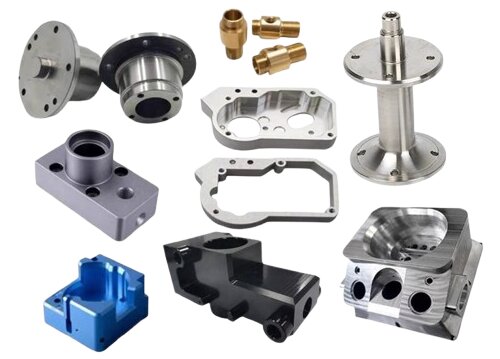
Applicazioni in diversi settori
La fresatura verticale è utilizzata in molti settori. Funziona bene sia per i pezzi personalizzati che per la produzione su larga scala, rendendola uno strumento flessibile per diversi tipi di lavoro.
Componenti aerospaziali
I componenti aerospaziali richiedono tolleranze strette e finiture lisce. Le frese verticali possono creare superfici piane, fori e dettagli fini su alluminio, titanio e altre leghe. Sono spesso utilizzate per la produzione di aeromobili parentesi, alloggiamenti e strutture interne.
Prototipazione e produzione automobilistica
La fresatura verticale è uno standard nella prototipazione di componenti per auto. Aiuta a produrre rapidamente i pezzi durante le prove di progettazione. Viene utilizzata in produzione per i componenti di motori, staffe e sospensioni. La velocità e la precisione aiutano a rispettare le specifiche e le scadenze più strette.
Produzione di dispositivi medici
I pezzi medicali devono essere piccoli e precisi. Le frese verticali sono spesso utilizzate per strumenti chirurgici, parti di impianti e dispositivi personalizzati. Possono lavorare acciaio inossidabile, titanio e plastica, tutti materiali utilizzati nelle applicazioni mediche.
Fabbricazione e riparazione generale
Le officine che si occupano di riparazioni o di taglio generale dei metalli utilizzano le frese verticali per molte attività, tra cui l'asolatura, la preparazione delle superfici e la foratura. Le frese verticali sono strumenti affidabili per i lavori quotidiani di produzione o manutenzione su piccola scala.
Migliori pratiche per la fresatura verticale
Per ottenere tagli puliti e una buona qualità dei pezzi non basta la macchina giusta. Alcune abitudini di base possono rendere i lavori di fresatura più fluidi e affidabili.
Scegliere l'utensile da taglio giusto
La scelta dell'utensile dipende dal materiale e dal tipo di taglio. Utilizzate utensili in metallo duro per i metalli duri e in acciaio ad alta velocità per i materiali più morbidi. Scegliete utensili con il rivestimento, la forma e le dimensioni giuste. L'uso di un utensile sbagliato può portare a finiture scadenti o alla rottura delle frese.
Fissare correttamente il pezzo da lavorare
Bloccare sempre saldamente il pezzo. Il pezzo che si muove durante il taglio può rovinare il lavoro o rompere l'utensile. Utilizzare morse, morsetti o dispositivi personalizzati per mantenere stabile il pezzo. Ricontrollare tutto prima di iniziare il taglio.
Regolazione della velocità e dell'avanzamento
La giusta velocità del mandrino e l'avanzamento dipendono dal materiale e dalle dimensioni della fresa. Una velocità eccessiva provoca calore e usura dell'utensile, mentre una velocità troppo bassa fa perdere tempo. Utilizzate le tabelle o i software per trovare un buon punto di partenza, e poi effettuate una regolazione fine durante il lavoro.
Mantenere gli strumenti affilati
Gli utensili opachi generano calore, lasciano finiture ruvide e possono persino danneggiare il pezzo. Controllate regolarmente gli utensili e sostituiteli o riaffilateli prima che si usurino. In questo modo si contribuisce al buon funzionamento della macchina e si prolunga la durata degli utensili.
Fresatura verticale e orizzontale
Sia la fresatura verticale che quella orizzontale hanno il loro posto. Conoscere le loro differenze aiuta a scegliere quella giusta per il proprio lavoro.
Confronto tra i progetti di macchine
Le frese verticali hanno un mandrino che si muove su e giù. Il pezzo da lavorare poggia su un tavolo piatto. Questa configurazione è più semplice e facile da usare.
Le frese orizzontali hanno un mandrino che scorre lateralmente. Utilizzano attrezzature speciali e spesso hanno la rimozione dei trucioli incorporata. Queste macchine sono più rigide e più adatte a tagli profondi.
Differenze di costo e di efficienza
I mulini verticali costano meno in anticipo, occupano meno spazio e sono più economici da mantenere. Sono ideali per lavori leggeri e medi.
Le frese orizzontali costano di più ma tagliano più velocemente e gestiscono pezzi più grandi. Sono più adatte a lunghe produzioni e a materiali difficili.
Quando scegliere l'uno piuttosto che l'altro?
Utilizzate una fresa verticale per i pezzi più piccoli, gli spazi ristretti e i lavori che richiedono un cambio frequente degli utensili.
Scegliete una fresa orizzontale quando avete bisogno di una maggiore produttività, di tagli più profondi o di una migliore rimozione dei trucioli. Sono anche più adatte per pezzi complessi o ingombranti.
Conclusione
La fresatura verticale è un processo flessibile e accurato per modellare parti in metallo e plastica. Funziona bene sia per compiti semplici che complessi. Con la giusta configurazione, può gestire lavori in molti settori, dall'aerospaziale alla riparazione generale. Conoscere i tipi di macchina, i metodi di taglio e le pratiche migliori aiuta a ottenere risultati migliori e a ridurre i tempi di inattività.
Avete bisogno di una fresatura di precisione per il vostro prossimo progetto? Contattate il nostro team per un preventivo veloce, un'assistenza esperta e ricambi di alta qualità su misura per le vostre specifiche.
Ciao, sono Kevin Lee

Negli ultimi 10 anni mi sono immerso in varie forme di lavorazione della lamiera, condividendo qui le mie esperienze in diverse officine.
Contattate

Kevin Lee
Ho oltre dieci anni di esperienza professionale nella fabbricazione di lamiere, con specializzazione nel taglio laser, nella piegatura, nella saldatura e nelle tecniche di trattamento delle superfici. In qualità di direttore tecnico di Shengen, mi impegno a risolvere sfide produttive complesse e a promuovere innovazione e qualità in ogni progetto.

